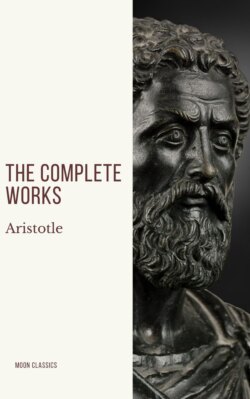Читать книгу Aristotle: The Complete Works - Aristotle - Страница 85
На сайте Литреса книга снята с продажи.
7
ОглавлениеIn the third figure, when both premisses are taken universally, it is not possible to prove them reciprocally: for that which is universal is proved through statements which are universal, but the conclusion in this figure is always particular, so that it is clear that it is not possible at all to prove through this figure the universal premiss. But if one premiss is universal, the other particular, proof of the latter will sometimes be possible, sometimes not. When both the premisses assumed are affirmative, and the universal concerns the minor extreme, proof will be possible, but when it concerns the other extreme, impossible. Let A belong to all C and B to some C: the conclusion is the statement AB. If then it is assumed that C belongs to all A, it has been proved that C belongs to some B, but that B belongs to some C has not been proved. And yet it is necessary, if C belongs to some B, that B should belong to some C. But it is not the same that this should belong to that, and that to this: but we must assume besides that if this belongs to some of that, that belongs to some of this. But if this is assumed the syllogism no longer results from the conclusion and the other premiss. But if B belongs to all C, and A to some C, it will be possible to prove the proposition AC, when it is assumed that C belongs to all B, and A to some B. For if C belongs to all B and A to some B, it is necessary that A should belong to some C, B being middle. And whenever one premiss is affirmative the other negative, and the affirmative is universal, the other premiss can be proved. Let B belong to all C, and A not to some C: the conclusion is that A does not belong to some B. If then it is assumed further that C belongs to all B, it is necessary that A should not belong to some C, B being middle. But when the negative premiss is universal, the other premiss is not except as before, viz. if it is assumed that that belongs to some of that, to some of which this does not belong, e.g. if A belongs to no C, and B to some C: the conclusion is that A does not belong to some B. If then it is assumed that C belongs to some of that to some of which does not belong, it is necessary that C should belong to some of the Bs. In no other way is it possible by converting the universal premiss to prove the other: for in no other way can a syllogism be formed.
It is clear then that in the first figure reciprocal proof is made both through the third and through the first figure-if the conclusion is affirmative through the first; if the conclusion is negative through the last. For it is assumed that that belongs to all of that to none of which this belongs. In the middle figure, when the syllogism is universal, proof is possible through the second figure and through the first, but when particular through the second and the last. In the third figure all proofs are made through itself. It is clear also that in the third figure and in the middle figure those syllogisms which are not made through those figures themselves either are not of the nature of circular proof or are imperfect.
